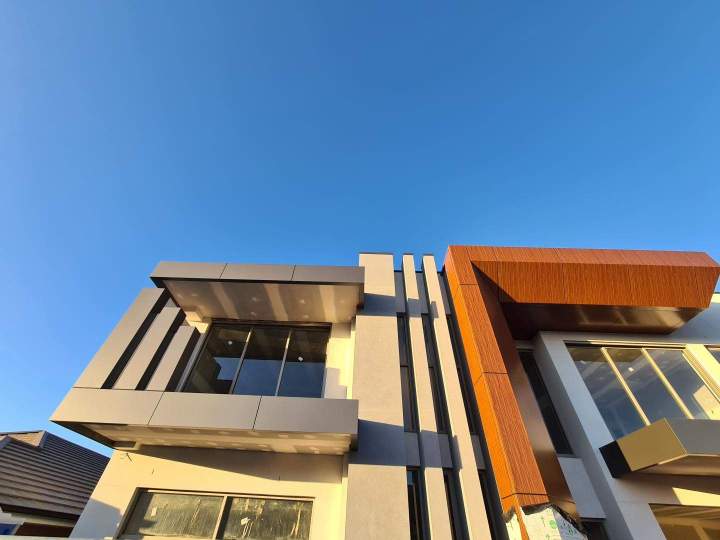How Are Aluminium Composite Panels Manufactured?

The manufacturing of Aluminium Composite Panels (ACPs) is a sophisticated process that combines advanced technology with precision engineering. This multi-step procedure ensures the panels are consistently high-quality, durable, and visually appealing.
The Core Lamination Process
The manufacturing of Aluminium Composite Panels begins with the creation of the core material. This core, which is typically made of polyethylene (PE) for standard panels or a fire-retardant mineral-filled material for fire-rated versions, is the foundation of the panel's structure. The core is extruded and carefully fed into a continuous lamination line. Simultaneously, two thin coils of aluminum are prepared. These aluminum sheets are first cleaned and then coated with a primer on one side to ensure strong adhesion. The exposed side is then coated with a high-performance paint, most commonly PVDF (Polyvinylidene Fluoride) for its superior durability, color retention, and resistance to weathering. In the next stage, a specialized adhesive film is applied to the primed side of each aluminum sheet.
All three components—the top aluminum sheet, the core material, and the bottom aluminum sheet—are then simultaneously fed through a series of heated rollers. These rollers apply a precise amount of heat and pressure to laminate the layers together, creating a single, cohesive panel. This continuous process ensures a uniform bond across the entire surface of the panel, eliminating the risk of delamination. The quality of this lamination process is a key factor in the longevity and performance of the final product, which is a standard of excellence upheld by TD Cladding Supplies Pty Ltd.
Cutting, Finishing, and Quality Control
Once the continuous sheet of laminated material is produced, it moves on to the cutting and finishing stage. The large, single panel is automatically cut into the required dimensions for specific projects. For architectural applications, these panels are often routed and grooved along the back to allow them to be folded and shaped into the cassette-style panels used in cladding systems. This process, known as V-grooving, is what gives ACPs their ability to create sharp, precise angles and complex geometric shapes on building facades.
Following the cutting, a protective film is applied to the painted surface to prevent scratches and damage during transportation and installation. The finished panels then undergo a rigorous quality control inspection. This inspection checks for a variety of criteria, including panel flatness, color consistency, gloss levels, and the strength of the bond between the layers. Panels are tested for resistance to peeling, impact, and weathering to ensure they will perform as expected in their intended environment. Only panels that pass all these tests are packaged and prepared for shipment. This final quality assurance step is crucial to guarantee that clients receive a product that not only looks exceptional but also meets the highest standards for durability and safety, a commitment central to the operations of TD Cladding Supplies Pty Ltd.